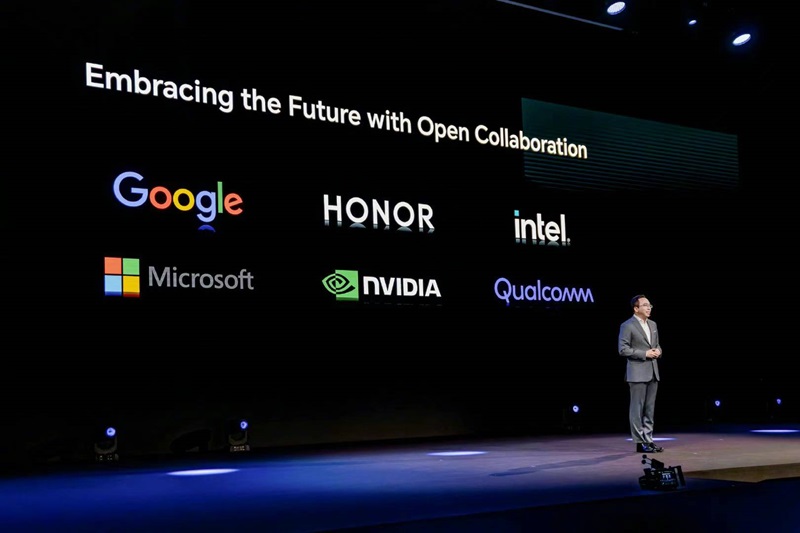Phil Lord and Christopher Miller, the creative minds behind the BAFTA and Annie-Award winning feature, The Lego Movie and 21 Jump Street, bring their unique sensibilities to a fresh version of a different Spider-Man Universe, with a groundbreaking visual style that’s the first of its kind. Spider-Man™: Into the Spider-Verse introduces Brooklyn teen Miles Morales, and the limitless possibilities of the Spider-Verse, where anyone can wear the mask.
Based on the comic book characters created by writer Brian Michael Bendis and artist Sara Pichelli in 2011, the movie centers on the adventures of African-American/Puerto Rican Brooklyn teen Miles Morales as he tries to fit in at a new private school in Manhattan.
Miles’ father is a by-the-books police officer and his mother is a devoted nurse. They are both loving parents who are proud of their son’s achievements, and want to see him succeed in the new school for gifted students. However, adjusting to the new school proves to be tough on Miles who would rather spend time with his friends from the neighborhood or visit his uncle Aaron, who encourages his talents as a graffiti artist. Although Miles idolizes Aaron, his charming uncle is quite a complex character who has had troubles with the law in the past.
Miles’ life becomes even more complicated when he is bitten by a radioactive spider, and he finds himself developing super powers, which includes venom strike, camouflage, sticking to objects, incredible hearing, Spidey sense, and much more. Meanwhile, the city’s nefarious criminal mastermind Kingpin has developed an ultra-secret nuclear super collider which opens up a portal to other universes, pulling different versions of Spider-Man (including an older Peter Parker, Spider-Gwen, Spider-Man Noir, Spider-Ham and anime Peni Parker) into Miles’ world.
Aided by familiar characters such as Peter Parker, Spider-Gwen and a kick-ass version of Aunt May, and new characters such as Spider-Ham, Spider-Man Noir and anime Peni Parker, Miles learns to accept the challenges and responsibilities of being a real superhero. He ultimately realizes that anyone can wear the hero’s mask and take action to fight for what’s right.
CASTING A WIDE WEB OF VOCAL TALENT
To voice the colorful characters of Spider-Man’s new adventure, the filmmakers tapped some of the brightest and most talented actors working in Hollywood today. Providing the film’s main voices are Shameik Moore as Miles Morales, Jake Johnson as Peter Parker, Hailee Steinfeld as Spider-Gwen, Mahershala Ali as Miles’ Uncle Aaron, Brian Tyree Henry as Miles’ father
Jefferson, Lily Tomlin as Aunt May, Luna Lauren Velez as Miles’ mother Rio, John Mulaney as Spider-Ham, Kimiko Glenn as Peni Parker, with Nicolas Cage as Spider-Man Noir, and Liev Schreiber as Kingpin.
FUN FACTS: CHARACTERS
MILES MORALES
- Miles Morales was introduced to the Spider-Man comics in 2011, created by comic book writer Brian Michael Bendis and artist Sara Pichelli. While on a Marvel retreat, Bendis and his colleagues discussed the Ultimate Spider-Man comics and what they could do differently to create a universal appeal – months later, on a long bike ride, the idea hit him that if Peter Parker died heroically enough, another character could continue the Spider-Man legacy. Miles was born and has since become a fan favorite – he is a thirteen-year-old son of an African American father and Puerto Rican mother, and is a thoughtful, exciting and contemporary take on the Spider-Man character.
- Brian Michael Bendis has said three things inspired him to make Miles African-American – his own two adopted black children, the election of then-U.S. President Obama, and seeing actor Donald Glover wearing Spider-Man pajamas in an episode of the TV show Community, where he thought it just looked right. Miles’ Puerto Rican side was inspired by Axel Alonso, who was the Editor-in-Chief of Marvel at the time. Axel is biracial like Miles; his mother is British and his father is Mexican, and he wanted a Spider-Man that his son Tito would get excited about having the Hispanic last name of “Morales.” Axel has said in many interviews that the decision to make Miles half-Hispanic was a bit selfish on his part, but he thinks the outcome has been wonderful.
- According to Bendis, Miles has his mother’s last name in order to separate himself from his father’s situation – his dad, Jefferson, was a secret agent of SHIELD, and he didn’t want Miles in their records or in harm’s way. After Jefferson was no longer an agent of SHIELD, Miles was too old to change his name. Some comic readers thought Miles’ last name is Morales because his parents weren’t married when he was born, but they were.
- Shameik Moore (voice of Miles) wrote in his journal five years ago, “I am Miles Morales” because he felt connected to the character. He mentioned it to the filmmakers when he was auditioning. He still has the journal.
- For his Spider-suit, Miles spray-paints the colors to black and red instead of keeping them the traditional red and blue colors. It reflects his style as a teenager in Brooklyn.
- In Miles’ dorm room, you can see a poster of Chance the Rapper.
- In addition to the usual Spider-Man powers such as web shooting (from web shooters), sticking to objects, speed, strength, incredible hearing and Spidey sense, Miles has additional unique powers, such as venom Strike (an electrical sort of power that he can deliver with a touch) and camouflage (invisibility).
- The spider who bit Miles has the same camouflage power as him, which is visually represented in the movie. At first, Miles only turns invisible when he’s scared, so he has to learn how to perform the power on command – not just when he’s frightened.
PETER PARKER
- In Peter’s lair hideout, you can see costumes from various Spider-Man comics (as well as one from the PlayStation game), films, and games in his display case as well as his dune buggy from the comics on a platform. Additionally, there’s a framed photo of him and Barack Obama.
SPIDER-GWEN
- In addition to the usual powers such as web shooting (from web shooters), sticking to objects, speed, strength, incredible hearing and Spidey sense, Spider-Gwen uses graceful ballet-type movements in her fighting.
- Back in her world, Gwen is a drummer, so her music and dance background influences the look of her costume.
- Like Miles, Gwen’s father is also a cop.
JEFFERSON & RIO (MILES’ PARENTS)
- Miles’ dad Jefferson resembles director Peter Ramsey’s dad, according to production designer Justin K. Thompson.
- When creating Rio’s character, the film’s artists opted for being inspired by real people they would run into in New York.
UNCLE AARON
- Uncle Aaron is one of the few characters in the movie that was inspired by the look of his voice actor counterpart, Mahershala Ali. Character designer Shiyoon Kim was inspired by the actor’s long, thin physique and his tall, thin head.
AUNT MAY
- In this film, Aunt May echoes popular mature actresses like Jane Fonda and her voice counterpart, Lily Tomlin. Unlike previous depictions of her character, filmmakers described this version of her as “bad-ass” and “feisty.”
SPIDER-PEOPLE
- Each Spider-person has their own Spider-pose.
- PENI PARKER and SP//dr: Peni Parker lives in a future New York. Her dad was bitten by a radioactive spider. He built a robot, and when he passed away while fighting crime, his daughter Peni inherited the robot. The suit’s head is the home of a radioactive spider that shares a psychic link with the pilot.
- SPIDER-HAM: Spider-Ham was first introduced to Marvel comics by creators Tom DeFalco and Mark Armstrong in 1983. In addition to the usual Spider powers, he has cartoony powers such as throwing a black circle on a wall and climbing through it.
- SPIDER-MAN NOIR: Spider-Man Noir first appeared in the Marvel comics in 2001, and is modeled after an archetypal 1930s gumshoe.
VILLAINS
- KINGPIN – Kingpin was first introduced by Stan Lee and John Romita Sr. in 1967, and is one of the most powerful and ferocious crime lords in the Marvel universe. In this film, he’s over eight feet tall and seven feet wide. He’s portrayed as a giant black hole since he is responsible for opening the portal to another dimension. He is one of producer Phil Lord’s favorite characters, as he’s the most abstracted CG character he’s ever seen.
- PROWLER – In the comics, Prowler’s costume is green – production designer Justin K. Thompson and his team decided to change it to purple in the film and add details such as claws in order to make him a darker, scarier villain. In addition to strength and speed from his high-tech suit, Prowler’s powers include Muy Thai fighting. He also wears pneumatic boots that give him the ability to jump really far, almost fly.
- GREEN GOBLIN – Green Goblin stands 22 feet tall with green scales and a purple tongue.
- SCORPION – Scorpion’s legs go from pedal to quadruped when he’s fighting.
- TOMBSTONE – Production wanted Tombstone to look like a giant zombie, and the perfect counterpart to Spider-Man Noir – he’s inspired by the same 1930’s era.
STAN LEE
- The crew was so inspired by Stan Lee throughout production and featured so many fans than they kept adding his character, the owner of the costume store where Miles buy his first suit, in the movie.
- All appearances by Stan’s character were thought through so they would make sense on his way to work, his home or the neighborhood around his store. Those blink-and-you’ll-miss-them moments include him stepping over Miles and Peter after they landed on a sidewalk of New York city and pedestrians walk around them; as well as his character striking the Spider-Man pose in the window of a subway train as Miles swings past it.
FUN FACTS: ANIMATION STYLE
- The filmmakers set out to fuse the original printing techniques of the 1960’s Spider-Man comic with cutting edge CGI to create a unique style. As producer Phil Lord explains, “We are trying to bring the human hand back into visibility on top of all the amazing technological achievements.” Comic elements in the film include:
- Line work – to emphasize facial expressions or motion
- Graphic elements – used to fill the frame like “BOOM” and “POW”
- Panelization – breaks up action into panels and the animation frame rate mimics jumping from one panel to the next
- Half-tone dots – to render tone
- Colors – broken down into defined shapes to give them a more illustrative feel
- Hand-drawings – certain effects such as smoke, sparks, and explosions are hand-drawn by artists
- The filmmakers eliminated the idea of motion blurs for the film. The majority of the animation is done in twos instead of ones (images are held for two frames, rather than one – or twelve images per second, instead of twenty-four images), which is rare for CG. In fact, the directors wanted each frame of the film to look like a painting when paused to stay true to the comic book style.
FUN FACTS: EFFECTS
- GLITCHING – The effects team was given the green light to experiment with new technology that led to the invention of the film’s “glitching” effect. The glitch happens on characters, buildings, and cars when dimensional earthquakes that occur as a result of the arrivals of characters from alternative Spider-Verses. They used multiple cameras that mirrored the multiple universes – they are all shot on the same character and same animation, but are treated differently, creating a cubist, fragmented look.
- DIMENSIONAL QUAKES – Art directors Dean Gordon and Patrick O’Keefe and their team wanted to represent parallel worlds from the Multiverse intruding into our own. Cubism seemed like a natural idea since it represents multiple views of a scene within a single picture frame. So in this version, space is fractured, and within each fracture we see a different angle, scale, and rendering of the same place. Each fracture shows a parallel but slightly different version of our world existing in another universe and now trying to resolve itself in ours.
- MULTIPLE UNIVERSES – The filmmakers wanted the portal experience of passageways to other universes to represent what would happen when you smash together subatomic particles and create a tear in the space-time continuum. The technical team at Sony Pictures Imageworks developed a camera array that allowed them to project seven different angles on the screen at the same time, while enabling them to render each other one of those cameras in a different style. Visually, it looks like abstract art
- MILES’ VENOM STRIKE – The Venom Strike was inspired by a 2D anime style, which was brought to a 3D environment. The look development and compositing teams made it work with the screen print technique that is one of the defining visuals of the movie.
- MILES’ INVISIBLITY – The look development team looked at how cuttlefish are able to appear invisible when they position themselves in front an object. It’s view is dependent, so the fish only looks invisible if you are looking at it straight ahead. The team modified that and came up with a solution so Miles would appear invisible in all directions in a 3D environment, while still maintaining the overall look of the movie with the screen printing and line work on top of it.
FUN FACTS: ENVIRONMENTS
- In order to capture authentic backdrops for the movie, the creative team visited big charter schools in Los Angeles and New York for photo references. Director Bob Persichetti photographed different locations for the look and color keys of the film, such as Brooklyn and Manhattan.
- ALCHEMEX LABS – The lab was created with a mixture of highly reflective material to parallel the Multiverse aspects. There’s also a green tint to the space because production chose green to be the color of evil, discomfort, and apprehension in the film.
- COLLIDER – In the original comics, the Collider is a smaller hand-held device, but the filmmakers needed a much more cinematic device for the movie. They looked closely at the Large Hadron Collider in Geneva, which is the world’s largest and most powerful particle collider. It lies in a tunnel that is 17 miles in circumference and 574 feet deep.
- HUDSON VALLEY – Producers Phil Lord and Christopher Miller were looking for an organic way to get Spider-Man out of the city – the creative team put him in new locations like the Hudson Valley Forest in upstate New York. Art Director Patrick O’Keefe decided to triple the size of the trees.
FUN FACTS: PRODUCTION
- Spider-Man: Into the Spider-Verse is the first animated theatrical Spider-Man feature.
- The animation crew is the largest Sony Pictures Imageworks has ever had, due to the unique process to get to the correct look of the film. There were nine leads, with a majority of the team in Vancouver and a smaller team of animators at the studio in Culver City.
- While animators normally create approximately 4 seconds of animation per week, on Spider-Man: Into the Spider-Verse the pipeline was so complex and groundbreaking that they were only able to produce on average 1 second of animation per week. This led to hiring more animators to take on the workload and achieve the unique visual style.
- Artists from over 30 different countries contributed to the work on the film.
- The flashback sequences throughout the film were inspired by the Spider-Gwen comics. In fact, the original team of the Spider-Gwen comics designed a comic transition for the movie, including comic book artists Jason Latour, Robbi Rodriguez, and Rico Renzi.
- Some of the comics Miles comes across in the film were hand-inked by comic book artist Marcelo Vignali, who was a huge fan of the first animated Spider-Man TV series and referenced Steve Ditko’s classic comics as well as John Romita Sr’s work.
- At the same time producer Amy Pascal and Marvel Studios founder Avi Arad approached Phil Lord and Christopher Miller to produce the film, Phil had just visited a modern art retrospective in New York City, and the modern art made him think they could create a post-modern Spider-Man. He leaned into the idea of a post-modern Spider-Man in an environment that has multiple Spider-people from all the comics.
- In another instance, Phil and Chris were walking through Olvera Street and were shocked at how many people were wearing the Spider-Man mask – it made them think how anyone truly can wear the mask, as underneath you don’t know the wearer’s race gender, or age. It added to the idea that Spider-Man could be a pig, a little girl, or an older male – thus creating the idea of the Spider-people.
- Phil and Chris’ mission statement for the movie was, “Inspire young people to become heroes. Inspire grown-ups to help them do it. And remind us all that you don’t need to be bit by a radioactive spider to do your part. You are powerful, and we are counting on you.”
- While working on the film, Visual Effects Supervisor Danny Dimian constantly referred back to a quote from a scientist that says, “Success is going from failure to failure with undiminished enthusiasm.” The creative team was encouraged to try new things that haven’t been done before, even if it meant failing, in order to find ways to reach their end goal of creating a unique final look to the film.
Here is how you can Enjoy the Marvel Universe at Home!
Spider-Man™: Into the Spider-Verse will be available in South Africa on the 14th of December 2018!


































